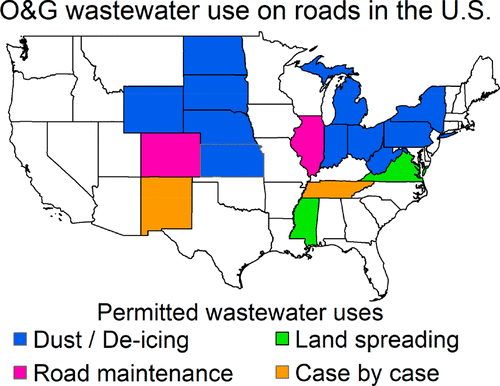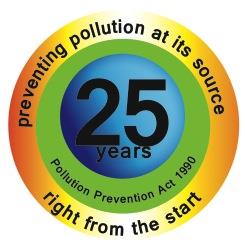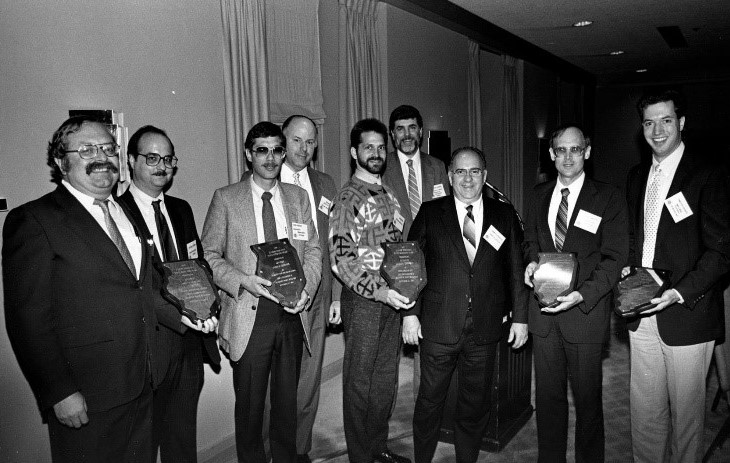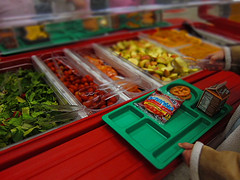A sustainability gem hides in Champaign, just east Neil Street and the Springfield Avenue viaduct. Tucked away on the second floor of a nondescript strip mall, The IDEA Store, an “eco-edu-art marketplace,” has set the standard for creative reuse retail in downstate Illinois. Any preconceived notions one may have about traditional secondhand shopping will be suspended the second they walk into this expertly-curated hub of reusable goods.
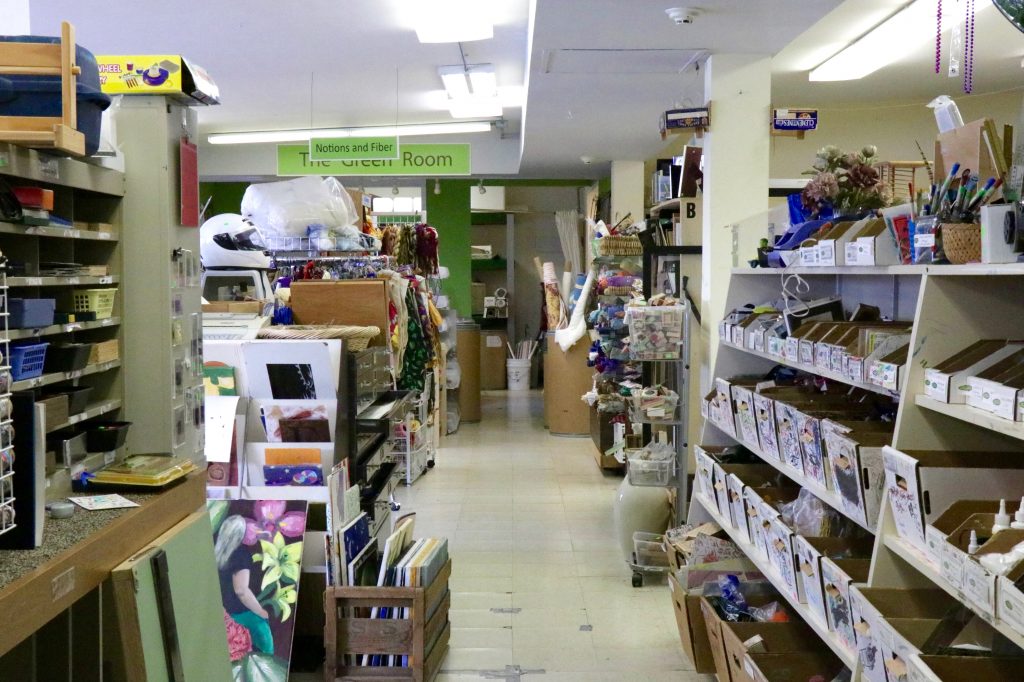
PHOTOGRAPHY BY: Margaret Golden, ISTC Intern
Co-founded by Carol Jo Morgan in 2010, the IDEA Store accepts items that would normally be thrown in the trash and gives them a second life. This isn’t your average thrift shop. The IDEA Store exists more as a testament to the benefits of sustainability. Its specialty is showcasing how almost any household item has the poten tial for reuse, encouraging the community to refrain from contributing to landfill growth.
tial for reuse, encouraging the community to refrain from contributing to landfill growth.
“My favorite thing about working here, of all the awesome things, is seeing people’s faces when they come in the door,” says the Idea Store’s Retail Manager Jessy Ruddell. “When you see one bottle cap, it doesn’t seem awesome, it seems like trash or recycling. But when you get a collection of bottle caps together, it can really inspire people creatively.”
The shop is filled with typical household items as well as more unexpected discoveries. You can find school supplies next to glass slides donated by the University of Illinois’ Art History department. A bin of rubber stamps
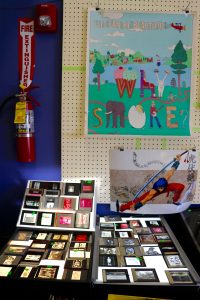 is an aisle down from a collection of disconnected keyboard keys. There are greeting cards, yarn, fabric, candles, magazines, records, instruments, office supplies, metals, and even home improvement materials. The most interesting item the store has received? “We once had someone donate a desiccated tarantula,” Morgan said, in between bouts of laughter. “And it sold for $20!”
is an aisle down from a collection of disconnected keyboard keys. There are greeting cards, yarn, fabric, candles, magazines, records, instruments, office supplies, metals, and even home improvement materials. The most interesting item the store has received? “We once had someone donate a desiccated tarantula,” Morgan said, in between bouts of laughter. “And it sold for $20!”
Morgan, who received her master’s in Natural Resources & Environmental Sciences, has some advice for other retail outlets looking to incorporate sustainability into their business plans. “We know that there are cottage industries that have sprung up as a result of the IDEA being here. When you think about it, the raw materials we supply are so inexpensive, it helps their profit margin,” Morgan explained. “We’ve provided a sustainable place for people to shop. People with budgets, people without budgets, there’s something for everyone. We’ve filled a niche. That is the secret of success in any kind of nonprofit or business. You look where the need is and you fill that.”
 The IDEA Store won’t be located at its current Springfield Avenue location for much longer. Morgan and team are in the process of transitioning the store to a new location at Lincoln Square Mall in Urbana. To accommodate an exponential growth in donations, the Lincoln Square storefront will be three times larger than the current location. This will allow excess items currently stored in the warehouses to be sold on the floor. The location also makes it much easier to donate materials. Instead of having to physically bring their donations in and hand them off to volunteers, customers will be able to drive around to the back of the mall and simply ring the doorbell to have their items collected. Keep an eye out for the new store, which has a targeted opening date of late October.
The IDEA Store won’t be located at its current Springfield Avenue location for much longer. Morgan and team are in the process of transitioning the store to a new location at Lincoln Square Mall in Urbana. To accommodate an exponential growth in donations, the Lincoln Square storefront will be three times larger than the current location. This will allow excess items currently stored in the warehouses to be sold on the floor. The location also makes it much easier to donate materials. Instead of having to physically bring their donations in and hand them off to volunteers, customers will be able to drive around to the back of the mall and simply ring the doorbell to have their items collected. Keep an eye out for the new store, which has a targeted opening date of late October.
A crowdfunding effort will be launched August 20th to support the financial cost of the IDEA Store’s big move. Community support ensures that the shop’s growth will be successful and smooth.
To donate, visit:
https://secure.givelively.org/donate/champaign-urbana-schools-foundation/the-big-idea

